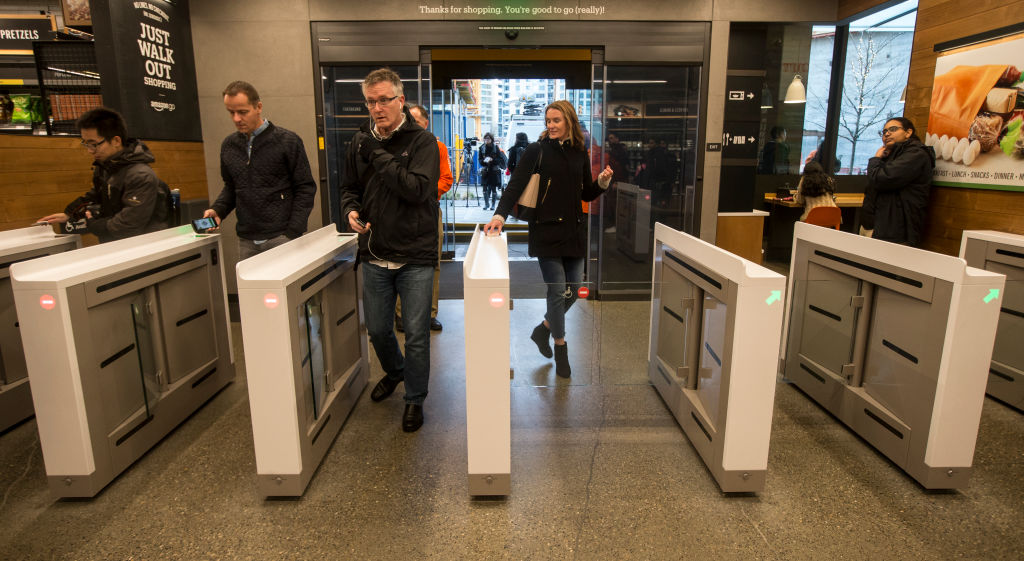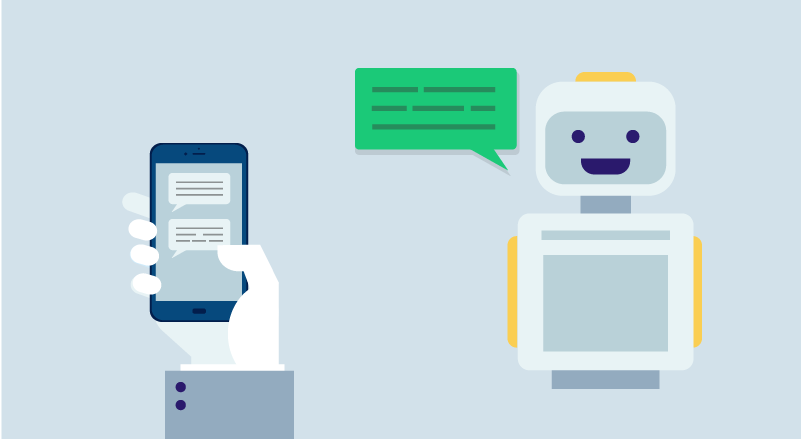IoT, or, the “Internet of Things” has been the hottest tech buzzword with great things expected of it in 2019 and beyond. In this article, we talk about its impact on all things retail.
IoT Retail Definition And Examples
The phrase IoT, in a nutshell, represents all of the “smart technologies” of today and their connected devices. IoT includes hardware, software, systems integration, data and telecom services. The potential of IoT is in how these interconnected devices and technologies interact with each other, and with human beings, to tackle a variety of modern-day problems and create innovative solutions.
With manufacturing costs of smart devices going down, we are very close to using IoT within all sectors including retail. In fact, IoT is already in our homes- from voice assistants like Alexa to smart lighting and automated security systems, everything can be connected.
A few years ago, Mark Zuckerberg said that he’d be taking time out to focus on building devices that can ‘talk’ to each other. Just a few years later, that vision has already come true.
Today, we can easily task Alexa with completing our shopping simply by reading out the shopping list. It is also worth mentioning that Alexa stores all conversations, so the day is not far when you can even set up repetitive tasks.
If you think smart lighting isn’t for you, think about what it might mean to a retail store. When there are fewer customers, you can automatically dim the lights. When more people enter, you can adjust the cooling system. The best part? You can do all of this without actually being involved in the task.
Once it fully embraces IoT, the new wave in retail revolutions will likely begin. According to a research report by Global Market Insights, Inc., IoT retail will reach past a cool $30 billion by 2024. From manufacturing to field service monitoring to supply chain and inventory management, every area of retail is set to benefit from the IoT touch.
Top 5 Areas Where IoT is transforming the Retail Industry:
The biggest sphere of influence of IoT in retail is in improving customer experience, both online and in brick-and-mortar settings. Early adopters of IoT services in retail claim IoT has provided them with richer, deeper insights into customer preferences. IoT’s biggest gift to us is customer-centric data, the likes of which we could obtain from interactions with home assistants like Alexa.
IoT in retail helps multiply the number of ways in which retailers can reach both existing and new customers. Such targeted outreach can build customer loyalty and help with retention.
-
Inventory And Supply Chain Management Via Smart Shelves:
IoT retail has helped traditional stores, as well as omnichannel retailers, modernize and upgrade their operations, even streamlining inventory management.
Innovations like smart shelves take automated inventory management one step further. Store managers can get real-time notifications and updates on sales and stock levels, plus alerts when an SKU falls below the reorder level. Besides saving money by preventing both overstocking and shortage, smart shelves eliminate manual errors.
Smart shelf systems are based on Radio-Frequency Identification (RFID) technology. They contain three elements:
- an RFID tag to attach to merchandise,
- an RFID reader and,
- an antenna.
The RFID tags transmit data to the reader via radio waves. The data is sent to an IoT platform for storage and analysis.
RFID tags are similar to barcodes in the sense that a device can read and store digital data from a tag or a label. But there are more significant advantages to RFID systems. Most notably, RFID tag data can be read outside the line of sight, unlike traditional barcodes which must be lined up with an optical scanner.
Read our comparison between RFID and barcode systems here.
-
Cashier-less Checkouts


Image Source: Fortune.com
The checkout cashier may just be a machine next. With apps and device cameras replacing human cashiers at the point-of-sale (POS), checkout lanes may be a thing of the past. Stores can achieve more with fewer systems. We also predict that Mobile POS terminals will become more common.
AI systems such as Shoplift use computer vision systems to detect possible thefts or suspicious behavior. You can install these in all stores for better stock visibility. Systems can flag not-for-sale items like reusable shopping bags or unscanned merchandise if customers carry them past a checkpoint. The system also alerts store staff so they can do the needful.
-
Timed and Targeted Notifications Via Beacons
You might have been “Beaconed” and not known it! Beacons are small Bluetooth devices that send discount vouchers or event invites to smartphones that are within the coverage area. Beacons can be attached to walls, counters, etc. in the vicinity of the store.
Getting such alerts while in the proximity of a store can tempt a potential customer to enter the store and cash in on the offer. Stores can also beam out on-the-spot contests or lucky numbers to customers already in the store.
-
IoT Retail’s Interactive Shopping Experiences Via Digital Signage
Digital signage: digital-out-of-home applications (DOOH), intuitive device touch screens, and in-store digital displays help retailers uplevel customer engagement. In conjunction with beacons or other smart devices, captured data can help retailers design offers, product groupings and targeted promotions in real-time.
The Internet of Things takes digital signage beyond display boards. There is scope to collate data on buying behavior and patterns. Touchscreens in fitting rooms can suggest accessories, alternate patterns or sizes, or summon an assistant. Stores can collect data on shopper’s trials and final choices for purchase.
Taking it even more into sci-fi territory are built-in facial recognition systems that recognize you as you pass by. These systems can change the digital display to what might interest you!
-
Bringing The “Wow Factor” Into IoT Retail


Image Source: Retail Innovation
Nothing impresses us like next-level technology. Imagine a robot assistant to help you with routine errands. Some avant-garde businesses are using robots for inventory and restocking shelves. Companies are also developing service robots who can help customers find the right products. Some restaurants in China are piloting robot waiters.
Moreover, there are plenty of wacky and weird applications in IoT retail. Think bed-bug catchers or diaper-monitoring systems, all of which might just go very far in providing a great experience. Not only does IoT open up new opportunities for retailers, but it also could become a sought-after product that customers will want to buy.
Request Demo
thank you
thank you
thank you
Request Demo
window.IS_INDIA = 0;window.USER_COUNTRY = 'China';window.USER_CITY = 'Hangzhou';window.USER_COUNTRY_ISO = 'CN';
Armed with a degree and a pen, loves to tell stories. When not telling stories, she also works. Hard to decide which one she likes more.
(function(d){var s=d.createElement('script');s.type='text/javascript';s.src='https://a.omappapi.com/app/js/api.min.js';s.async=true;s.dataset.campaign='cxecxy09nlvnnyvfiqjf';s.dataset.user='22867';d.getElementsByTagName('head')[0].appendChild(s);})(document);
,


